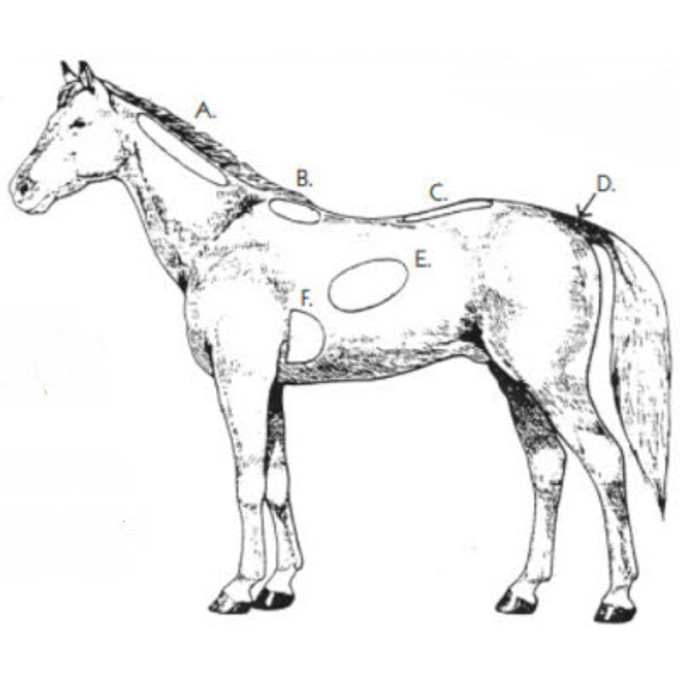
Horse Body Condition Scoring
Posted by Grange Co-op on 15th May 2015

Many physiological functions in horses are influenced by body condition, including maintenance, reproductive and exercising requirements.
A system called Body Condition Scoring can be used to rate ideal body condition.
This condition scoring system is based on visual appraisal and palpable fat cover on six areas of your horse’s body.
Description of individual condition scores (Score 1-9)
1. POOR: Animal extremely emaciated,spinous processes, ribs, tailhead, tuber coxae (hip joints), and ischia (lower pelvic bones) projecting prominently. Bone structure of withers, shoulders and neck easily noticeable. No fatty tissues can be felt.
2. VERY THIN: Animal emaciated. Slight fat covering over base of spinous processes; transverse processes of lumbar vertebrae feel rounded. Spinous processes, ribs, tailhead, tuber coxae (hip joints), and ischia (lower pelvic bones) prominent. withers, shoulders and neck structures faintly discernible.
3. THIN: Fat buildup about halfway on spinous processes; transverse processes cannot be felt. Slight fat cover over ribs. Spinous processes and ribs easily discernible. tuber coxae (hip joints) appear rounded but easily discernible. tuber ischia (lower pelvic bones) not distinguishable. withers, shoulders and neck accentuated.
4. MODERATELY THIN: Slight ridge along back. faint outline of ribs discernible. tailhead prominence depends on conformation, fat can be felt around it. tuber coxae (hip joints) not discernible. withers, shoulders and neck not obviously thin.
5. MODERATE: Back is flat (no crease or ridge) ribs not visually distinguished but easily felt. Fat around tailhead beginning to feel spongy. withers appear rounded over spinous processes. Shoulders and neck blend smoothly into body.
6. MODERATELY Fleshy: May have slight crease down back. Fat over ribs spongy. Fat around tailhead soft. fat beginning to be deposited along the side of the withers, behind shoulders, and along the side of the neck.
7. FLESHY: May have crease down back. individual ribs can be felt, but noticeable filling between ribs with fat. Fat around tailhead soft. Fat deposited along withers, behind shoulders, and along neck.
8. FAT: Crease down back. Difficult to feel ribs. Fat around tailhead very soft. Area along withers filled with fat. Area behind shoulder filled with fat. noticeable thickening of neck. Fat deposited along inner thighs.
9. EXTREMELY FAT: Obvious crease down back. Patchy fat appearing over ribs. Bulging fat around tailhead, along withers, behind shoulders and along neck. Fat along inner thighs may rub together. Flank filled with fat.
